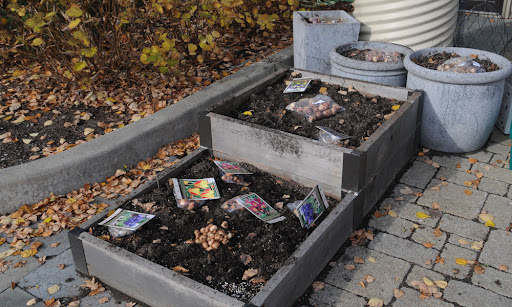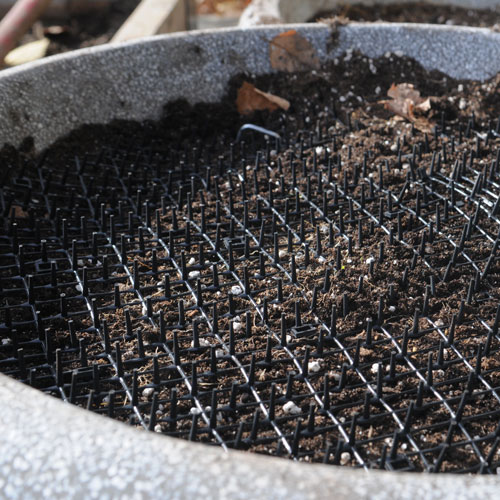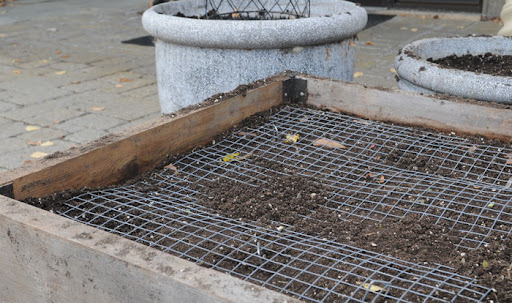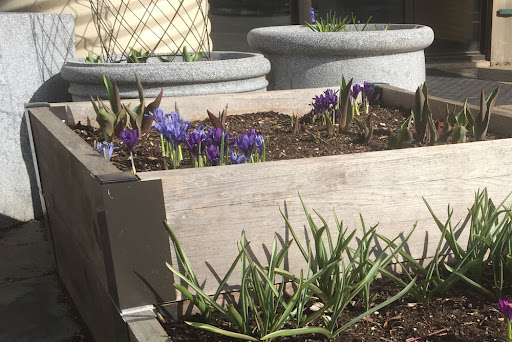Spring Bulbs in Raised Beds
If you’re a raised bed gardener, chances are your beds are empty for a large portion of the year: from the end of harvest through the winter.
What if you could squeeze in another crop? Consider fall-planted, spring-blooming bulbs.
At the front of our building, we have a set of raised beds and planters, which are filled with pollinator-friendly annuals all summer. By the end of October, frost kills the annuals and we empty the beds for winter. Sometimes, we cover crop with winter rye.

Keep critters out
Last fall, I planted a few dozen bulbs in the beds and planters. I was worried about rodents, so I covered the soil surface with a layer of metal “hardware cloth” to keep the bulbs safe. In the planters, I used pieces of Cat Scat Mat. It’s easy to cut to fit with a pair of scissors. To keep the beds and planters neat, I covered the mats and hardware cloth with a 2-inch layer of potting soil, enriched with a few scoops of compost.

Spring arrives
Spring is here and the bulbs are blooming on schedule, with no evidence of rodent damage. The mats and hardware cloth don’t hinder the emerging bulbs—the emerging stems grow through the gaps.

After the bulbs are done blooming
Once the bulbs have finished their display, I’ll pull them out and compost the lot. To some, it might seem a bit wasteful, but I treat them as annuals. Because my beds are small (3×3), I chose bulbs to fit the scale: crocus, miniature irises, chionodoxa and miniature daffodils. Of course, I couldn’t resist a few big, glorious tulips, which I got from Longfield Gardens. Next fall, I’ll plant something different.
The hardware cloth and Cat Scat Mats will also come out, followed by a recharge to make the soil fertile for the new season’s crops.


Print this Article:
Get the Dirt
Stay up to date on new articles and advice. Please fill out the information below.

